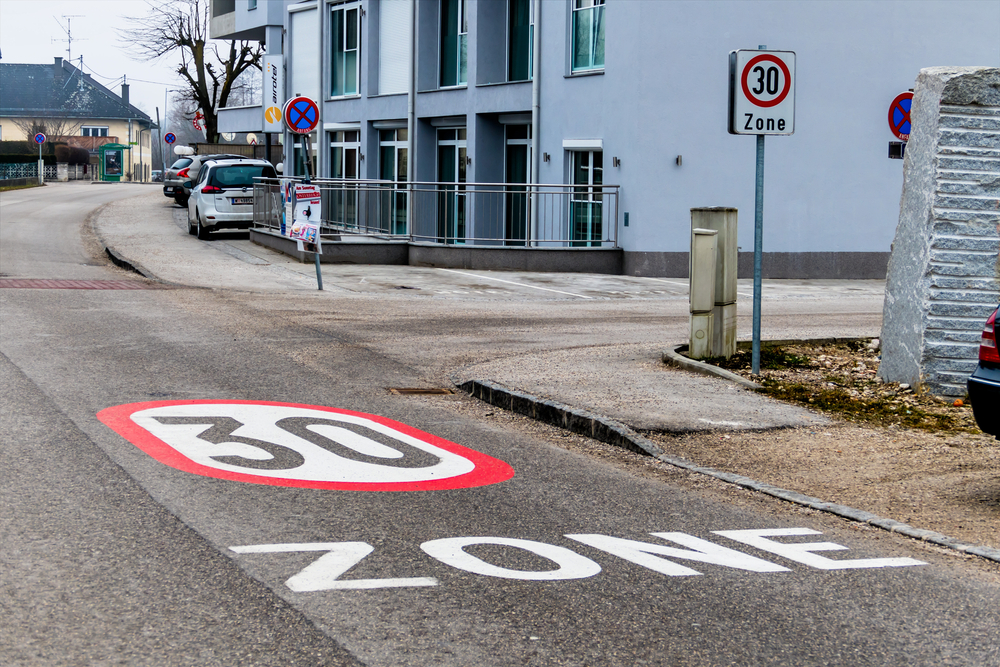Above the speed limit - that costs 20 lives
How fast do cars and motorcycles drive in Switzerland? Often faster than permitted - this is shown by a new, comprehensive BFU survey. Every third vehicle is speeding in built-up areas and on freeways. On average, motorcycles drive slightly faster than cars. If all drivers obeyed the speed limits, there would be around 20 fewer fatalities and 300 fewer serious injuries in Switzerland each year, according to the BFU.

How fast cars and motorcycles are traveling is an important factor in determining how safe road traffic is. However, reliable data on this of all things has been lacking in Switzerland until now, as the Swiss Federal Accident Prevention Bureau (BFU) points out. The organization has therefore conducted a comprehensive Pilot study surveyed how fast people actually drive in Germany. Data from over 16 million vehicles on 211 road sections were analyzed. The results show: Outside built-up areas, a clear majority adhere to the speed limits. More speeding violations occur on highways and in built-up areas.
One in three in urban areas, one in six out of urban areas
The measurements show that every third vehicle is speeding at 50 km/h in built-up areas and at 120 km/h on freeways. At 80 km/h, every sixth vehicle is speeding - the out-of-town speed regime is best respected overall.
According to the study, 54% of all evaluated motor vehicles drive faster than the speed limit at 30 km/h. This means that only a minority of the vehicles in villages and neighborhoods with low traffic speeds comply with the speed limit. According to the study, only a minority of drivers in traffic-calmed villages and neighborhoods adhere to the speed limit. Cars travel at similar speeds on 30-mph roads in the various parts of the country. However, there are regional differences among motorcyclists: While 55% of motorcycles were speeding on 30-mph stretches in western Switzerland and Ticino, the figure in German-speaking Switzerland was a worrying 72%.
Also overall, across all speed regimes, motorcycles were traveling slightly faster on average than cars, he said.
20 fatal accidents per year avoidable
If all drivers of cars, vans and motorcycles strictly observed the speed limits, more than 20 fatalities and over 300 serious injuries could be prevented each year. This is the conclusion reached by the BFU based on the available data.
The greatest potential for preventing fatal accidents is in 80 km/h speed limit regimes: ten avoidable deaths occur there every year. They are followed by 50 km/h regimes with eight avoidable fatalities per year. Most accidents with serious injuries could be prevented in 50 km/h regimes - with up to 182 fewer serious injuries per year.
According to the BFU, the connection between speed and the risk of injury is proven. Firstly, the higher the average speed of motor vehicles, the higher the risk of an accident. And secondly, when an accident does occur, the consequences are usually more serious at higher speeds, as the BFU emphasizes.
Drivers, police, authorities and car manufacturers challenged
Drivers should be aware: Speed limits are meaningful and well thought out, even if their purpose is not immediately obvious on every stretch of road.
According to the BFU, prevention-oriented police checks also have safety potential. These can encourage motorists not to exceed the speed limit and to drive in a manner appropriate to the conditions. Ideally, the effect of speed checks is reinforced by accompanying prevention campaigns.
Source: AAIB
Increase traffic safety
In addition to the above-mentioned, the BFU sees further fields of activity to increase road safety. For example, it is also important to design safer roads and vehicles:
Self-explanatory and forgiving roads: Roads should be built in such a way that road users can recognize the maximum speed by their appearance. In addition, an even speed should be possible - especially outside built-up areas (homogeneous speed profile). Fixed objects at the roadside should be removed. The AAIB advises Municipal, cantonal and federal authorities, engineers and other stakeholders in such safety issues.
Infrastructure security instruments (ISSI): To make roads safer, the federal government, together with the BFU, has developed six Infrastructure security tools Those who use them can analyze the safety of existing roads - and plan new roads safely from the outset.
Driver assistance systems: As many vehicles as possible should be equipped with Speed assist be equipped. Anyone who wants to buy a car in the near future or retrofit the existing one can find out more on the BFU portal smartrider.ch inform about such systems.









